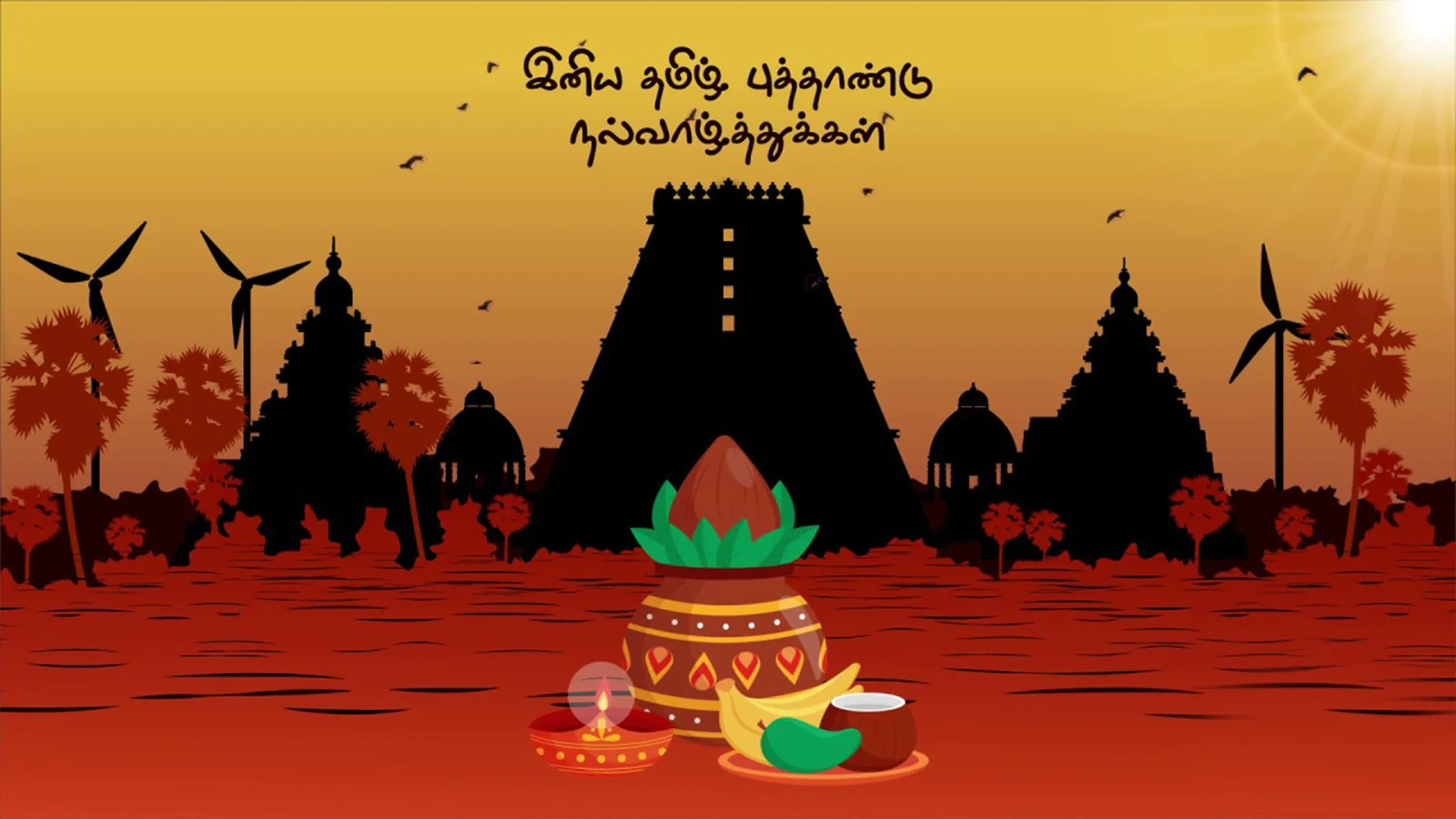Tamil New Year, also known as “Puthandu” or “Varusha Pirappu,” is a significant festival celebrated by the Tamil community around the world. This joyous occasion marks the beginning of the Tamil calendar year and is observed with great enthusiasm, cultural fervor, and spiritual significance. Let’s delve into the rich traditions and customs associated with Tamil New Year and explore how this vibrant festival is celebrated.

The Significance of Tamil New Year
Contents
- 0.1 The Significance of Tamil New Year
- 0.2 Traditional Preparations and Rituals
- 0.3 Festive Foods and Delicacies
- 0.4 Cultural Performances and Entertainment
- 0.5 Community Gatherings and Celebrations
- 0.6 Reflection and Renewal
- 1 Embracing Tradition: Celebrating Tamil New Year in Style
- 1.1 1. Cleaning and Decorating Homes
- 1.2 2. Traditional Attire
- 1.3 3. Temple Visits and Prayers
- 1.4 4. Feast of Flavors
- 1.5 5. Cultural Performances
- 1.6 6. Exchange of Gifts
- 1.7 7. Community Events and Gatherings
- 1.8 8. Reflection and Resolutions
- 1.9 9. Virtual Celebrations
- 1.10 10. Spreading Joy and Cheer
- 1.11 Conclusion
- 2 Author
Tamil New Year holds immense cultural and religious significance for the Tamil community, both in India and across the globe. It signifies new beginnings, prosperity, and the renewal of life. The festival is celebrated on the first day of the Tamil month of “Chithirai,” which typically falls in mid-April according to the Gregorian calendar. It is a time for family gatherings, feasting, and offering prayers for blessings and abundance in the year ahead.
Traditional Preparations and Rituals
Preparations for Tamil New Year begin well in advance, with families cleaning and decorating their homes to welcome the auspicious occasion. On the day of the festival, people wake up early and take part in traditional rituals to usher in the new year. This includes bathing, wearing new clothes, and visiting temples to offer prayers and seek divine blessings for prosperity and happiness.
Festive Foods and Delicacies
Food plays a central role in Tamil New Year celebrations, with families preparing a variety of traditional dishes to mark the occasion. Specialties such as “Maanga Pachadi” (a sweet and tangy mango dish), “Paruppu Vadai” (lentil fritters), “Payasam” (a sweet pudding), and “Vegetable Sambar” are commonly enjoyed during the festive feast. These dishes symbolize the diverse flavors of life and are shared with loved ones as a gesture of goodwill and unity.
Cultural Performances and Entertainment
Tamil New Year is also a time for cultural performances, music, and dance. Traditional folk dances such as “Kolattam” and “Kummi” are performed in villages and communities, accompanied by rhythmic beats of drums and music. In urban areas, cultural events, stage performances, and street processions add to the festive atmosphere, providing opportunities for people to come together and celebrate their heritage.
Community Gatherings and Celebrations
Community gatherings and social events are an integral part of Tamil New Year celebrations. Families and friends come together to exchange greetings, share meals, and exchange gifts as tokens of love and appreciation. Community centers, temples, and cultural organizations often organize special events and festivities, providing a platform for people to connect, bond, and celebrate their shared heritage.

Reflection and Renewal
Tamil New Year is not just a time for celebration but also for reflection and renewal. It offers an opportunity for individuals to reflect on the past year, express gratitude for blessings received, and set intentions for the year ahead. Many people take this time to make resolutions, embark on new ventures, and seek personal growth and development.
Tamil New Year is a vibrant and culturally significant festival that embodies the spirit of renewal, unity, and joy. It is a time for families to come together, communities to bond, and individuals to reflect on the journey of life. Through traditional rituals, festive feasts, cultural performances, and community gatherings, the Tamil community celebrates its rich heritage and reaffirms its values of love, compassion, and togetherness. As Tamil New Year dawns each year, it brings with it hope, optimism, and the promise of a brighter tomorrow for all.
Embracing Tradition: Celebrating Tamil New Year in Style
Tamil New Year, also known as “Puthandu” or “Varusha Pirappu,” is a festive occasion celebrated with much fervor and joy by the Tamil community around the world. This vibrant festival marks the beginning of the Tamil calendar year and is steeped in rich cultural traditions, rituals, and customs. Let’s explore the time-honored ways in which Tamil New Year is celebrated and how you can join in the festivities.
1. Cleaning and Decorating Homes
Preparations for Tamil New Year typically begin with a thorough cleaning of homes to usher in freshness and positivity for the new year. Families tidy up their living spaces, decorate with colorful rangoli patterns, and adorn doorways with mango leaves and floral garlands as symbols of prosperity and auspiciousness.
2. Traditional Attire
On the day of Tamil New Year, it’s customary to wear new clothes as a symbol of renewal and prosperity. Vibrant traditional attire such as sarees for women and veshtis or dhotis for men are commonly worn. Families dress in their finest outfits to mark the occasion and participate in festivities with elegance and grace.
3. Temple Visits and Prayers
A visit to the temple is an integral part of Tamil New Year celebrations. Devotees offer prayers to deities, seek blessings for the year ahead, and participate in special rituals conducted by priests. Temples are adorned with festive decorations, and the air is filled with the melodious sounds of devotional songs and chants.

4. Feast of Flavors
Food plays a central role in Tamil New Year festivities, with families preparing elaborate feasts to indulge in together. Traditional delicacies such as “Maanga Pachadi” (a sweet and tangy mango dish), “Vegetable Sambar,” “Paruppu Vadai” (lentil fritters), and “Payasam” (a sweet pudding) are prepared with love and care. The feast represents abundance and prosperity, and sharing meals with loved ones fosters a sense of togetherness and joy.
5. Cultural Performances
Cultural performances and entertainment are key highlights of Tamil New Year celebrations. Traditional folk dances such as “Kolattam,” “Kummi,” and “Bharatanatyam” are performed with enthusiasm and grace. Music, poetry recitations, and storytelling add to the festive ambiance, captivating audiences and celebrating Tamil heritage and culture.
6. Exchange of Gifts
Tamil New Year is a time for exchanging gifts and tokens of love with family members, friends, and neighbors. Sweets, fruits, and traditional treats are often shared as gestures of goodwill and appreciation. The act of giving reinforces bonds of friendship and strengthens community ties.
7. Community Events and Gatherings
Community centers, temples, and cultural gengtoto organizations host special events and gatherings to celebrate Tamil New Year. These festivities bring together people from diverse backgrounds to revel in the spirit of unity, camaraderie, and cultural pride. From cultural performances to games and activities for children, there’s something for everyone to enjoy.
8. Reflection and Resolutions
As Tamil New Year dawns, many individuals take the opportunity to reflect on the past year and set intentions for the year ahead. It’s a time for introspection, gratitude, and renewal. Making resolutions for personal growth, spiritual development, and community service is a common practice among those celebrating Tamil New Year.
9. Virtual Celebrations
In recent years, virtual celebrations have become increasingly popular, allowing families and friends to connect and celebrate Tamil New Year regardless of geographical distances. Video calls, virtual gatherings, and online events enable people to share the joy of the festival with loved ones near and far.
10. Spreading Joy and Cheer
Above all, Tamil New Year is a time to spread joy, cheer, and positivity. Whether through acts of kindness, charitable donations, or sharing festive greetings, celebrating Tamil New Year is about fostering happiness, unity, and goodwill among all.
Conclusion
In conclusion, celebrating Tamil New Year is a joyous and culturally enriching experience that brings together families, communities, and individuals in a spirit of unity and celebration. From traditional rituals and feasts to cultural performances and reflections, the festival offers a plethora of ways to immerse oneself in Tamil heritage and culture. By embracing tradition and sharing the festivities with loved ones, Tamil New Year becomes a memorable and meaningful occasion for all to cherish. So, as the new year dawns, let us join hands in celebrating the richness and diversity of Tamil culture and ushering in a year filled with happiness, prosperity, and abundance.
Read More Article About “MANUFACTURING PROCESSES: RAW MATERIALS TO FINISHED PRODUCTS“





